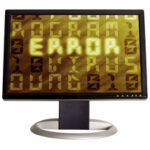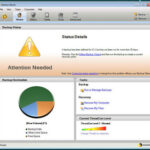What are the current top ten computer viruses? How does one protect his or her computer from them, or any virus? In this article we will first examine what the top ten computer viruses were for July 2006. Then we will examine how to protect our computers from them or any other viruses.
The most often reported computer virus in July 2006 was the Netsky/32-P. It was a mass mailing worm which spreads by e-mailing itself to addresses obtained from local hard drives.
The worm will also copy itself to peer-to-peer shared folders as a variety of files. There are too many of them to list all here, but they are all related to popular topics, obviously designed to catch the eye of the public. Some of the files are: Adobe Photoshop10 full.exe; Britney Spears .jpg.exe; and a variety of other files with the name of the singer in them Saddam Hussein.jpg.exe; a variety of files with the name Harry Potter in them, including, Harry Potter.doc.exe; and a variety of others. Some of the files have the words sex or porn in them.
The next most common virus was the W32/Mytob-AS, a mass mailing worm that attaches itself to computers through e-mail attachments and network shares. Many times the sender of this virus will send e-mail attachments that will claim the recipient has an e-mail account that will be suspended. The message may say: Your Account is Suspended; Detected Online User Violation; Your Account is Suspended for Security Reasons; Warning Message: Your services near to be closed; Email Account Suspension: Notice of Account Limitation.
The Microsoft website has a patch, MSO4-011, for the vulnerability caused by the worm.
The next most common virus was the W32 Bagle-Zip, a worm, downloaded as an IDE file.
The fourth most common virus in July 2006 was the W32/Nyxem-D, a worm, which turns off anti-virus programs on an infected computer, sends itself to e-mail addresses on an infected computer, deletes files off the computer, and forges the sender’s e-mail address. It also uses its own e-mailing engine, downloads code from the Internet; reduces system security, and installs itself in the registry.
The fifth most common virus in July 2006 was the W32/MyDoom-O, a worm. It spreads through e-mail addresses. The worm creates a file named services.exe in the Windows or Temp folder. The worm may use search engines to find more e-mail addresses to infect. The search engines used are Google, Lycos, Yahoo, and Altavista. The worm will typically send a message to the recipient that your e-mail could not be delivered for a variety of reasons or that it has been detected that your computer has been receiving a lot of unsolicited e-mails.
The next most common virus was the W32Zafi-B, a worm. It is spread through e-mail and will typically test for the presence of an Internet connection by connecting to Google or the Microsoft site.
The seventh most common virus in July 2002 was the Netsky/32-D, a worm. It is spread through e-mail. It can spoof a sender’s e-mail address. It will typically have a subject line starting with, Re:, followed by such subjects as: Approved; Details; Documents; Excel file; Hello; Here; Here is the document; Hi; My details; Document; Message; Your document; Re: Thanks; Thanks; Word file; Your archive; Your bill; Your details; Your letter; Your music; Your picture; Your product; Your software; Your text; Your website.
If you receive such a worm, you will be encourage to read the enclosed file, although the exact encourage may vary.
The eight most common virus was the W32/Mytob-C. It is spread through e-mail attachments. It allows others access to the infected computer and sends itself to e-mail addresses found on an infected computer. It forges the sender’s e-mail address.
Tied for the tenth most common virus in July 2006 was the W32/Mytob-FO. It is spread through e-mail attachments. The worm turns off anti-virus software on an infected computer. It allows others access to an infected computer, modifies data on a computer, forges a sender’s e-mail address, and installs itself on the registry.
Also tied for tenth was the W32/MyDoom-O, a worm. It is spread through e-mail. It sends itself to addresses found on an infected computer. It forges a sender’s e-mail address, installs itself in the registry, and exploits system or software vulnerabilities.
We have looked at some of the characteristics of the viruses. They are all spread through e-mail or e-mail viruses. Don’t open an e-mail attachment from someone you don’t know. The virus would be in the attachment, not the body of the e-mail.
Use a high quality anti-virus program. The website, www.washington.edu, a website of the University of Washington, recommends McAffe’s VirusScan for computers using a Windows operating system, and Virex for Macintosh computers. A variety of anti-virus software programs can be downloaded from the Internet. Some of them are even free.
Viruses are given in a variety of other ways, including sharing diskettes between computers (Make sure you trust a person who gives you a floppy), sharing program files (a less common way to get a virus, as program files aren’t shared that often anymore), and sharing document files.
There are other things you can do to protect yourself from viruses. Make back ups of important documents or files and store them on separate disks. If you use a computer in a college campus lab, reboot or run cleanup before starting your session. Do not share commercial software with anyone, as this is illegal and also a good way to transfer viruses. Make certain any software you obtain is from a reliable source.
There are a lot of viruses out there, not only the ten listed, and they can all do a lot of damage. There are a lot of things you can do to protect yourself, however, and this article has only covered some of them.




